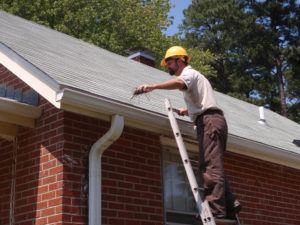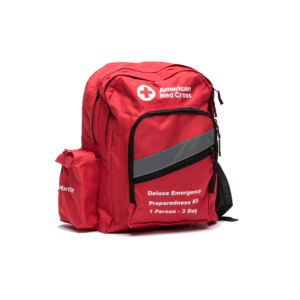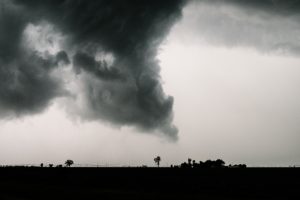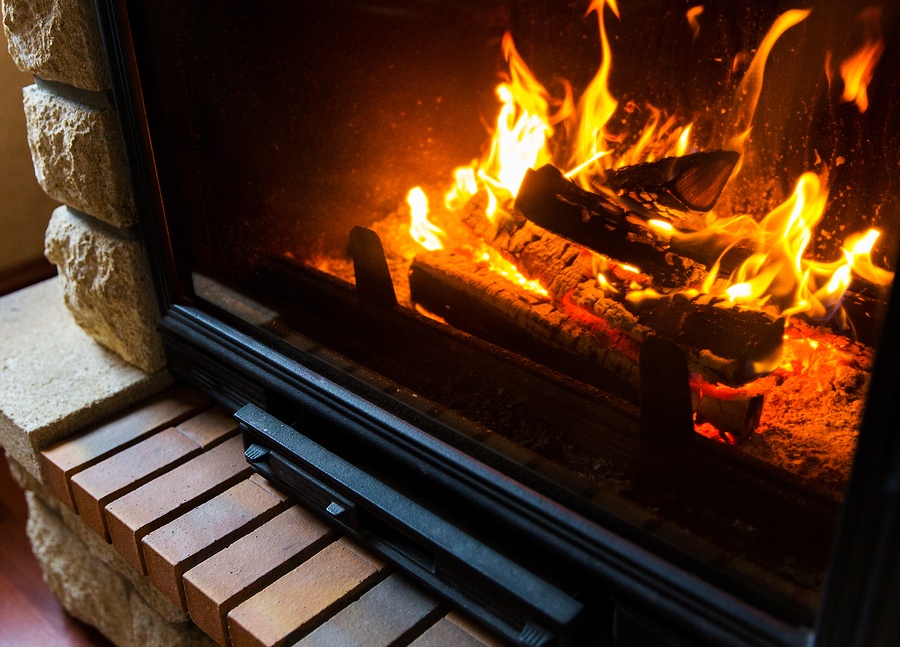Spring brings plenty of showers and wildflowers to North Texas, but locals know to brace for more than just rain. In this part of the country, spring means storm season, and some of the most severe weather events we experience. Preparing your home for spring storms whether they be tornadoes, flash floods, or hail storms can protect your family and your investment amidst the unknowns. From March through June, people and property are vulnerable to the destructive effects of wind, hail, lightning, and rain from spring storms. Of course, preparation can make all the difference, especially when it comes to your risks of fire and water damage.
Learn More: What is Water Damage?
Because severe storms can show up so suddenly, planning ahead is crucial. If you own a home, your risks this season will depend on your indoor and outdoor maintenance, as well as some essential items and information. Here are some of the most important ways to prepare for spring storms.
 Inspect Your Home, Inside and Out
Inspect Your Home, Inside and Out
Start by assessing your whole property, inside and out. Pay special attention to your siding, roof, chimneys, gutters, windows, and doors. Is there any damage from winter storms? Do you see excessive condensation near ducts or window openings? Identify anything and everything that may require repairs, from loose gutters and missing shingles to insulation that needs to be replaced.
Learn More: Five Tips to Prevent Water Damage in Your Home
Update Your Weather Stripping
If you notice gaps in your window sashes or doorways, re-caulk or replace your weather stripping before the spring storms come. An airtight seal is the only way to prevent drafts and energy loss throughout the year, but it’s especially crucial when floodwaters start rising and strong winds start blowing.

Schedule an Inspection
Your pipes, ducts and sewer should be in good condition before they face the extreme demands of spring storms. Schedule professional inspections of your HVAC and water systems to make sure everything is in working order. New filters, full fluid levels, and clean passageways could help prevent flooding or fire damage later.
 Check Your Fire Alarms
Check Your Fire Alarms
Lightning and power outages drastically increase your risk of fire. Preparing your home for spring storms means every room of your house should have a working smoke alarm to warn you if flames break out. Install additional detectors if necessary and test each of them regularly to make sure they are working properly. Keep fire extinguishers near large appliances, and make sure that you and your family have an evacuation plan ready.
Secure Your Outdoor Furniture and Decor
Do you keep any furniture or decorations outside? Any unsecured items in your front yard or backyard are potential projectiles once heavy winds pick up. To prevent injuries, broken windows, or worse, secure your patio furniture and store other loose items (such as tools, signs, and appliances) in your shed or garage.
 Secure Your Indoor Furniture
Secure Your Indoor Furniture
Although the storms are raging outside, your indoor furniture can be a hazard, too. If windows break and strong winds enter your home, they could end up causing a lot of damage. Secure your bookshelves and other top-heavy furniture to the walls, and move wall decorations and anything that could fall and cause injury onto a couch or bed.
Trim Your Trees and Shrubs
Dead and weak branches are disasters waiting to happen, especially if your trees and shrubbery are planted close to your home. Prune and trim all of the trees on your property, paying close attention to anything that could fall onto your house or fly through the air.
 Secure and Clean Your Gutters
Secure and Clean Your Gutters
Clogged gutters can’t direct heavy rain away from your home, and loose gutters can become hazards themselves. Prevent water damage by checking and cleaning all your gutters, including your downspouts, which should be securely positioned to drain water away from the foundation.
 Replace Your Rocks With Bark
Replace Your Rocks With Bark
Do you landscape with stones, gravel, or rocks? Consider an alternative filler before high winds come. Shredded bark and mulch are much lighter and softer, so they won’t chip glass or dent vehicles if they fly through the air.
Check Your Sump Pump
When water levels start rising, your sump pump should kick in to prevent flooding. Make sure yours can handle the task by cleaning and testing it before you need to use it. If you don’t have a generator, get a battery-powered backup sump pump that will keep running if the power goes out.
Take Photos of Your House and Possessions
Homeowners can do a lot to reduce their wind, water, and fire damage risks, but sometimes the force of nature is too strong for any amount of preparation. Just in case your home gets damaged later, document the whole property now. Take up-to-date photos of the inside and outside of your home, and store them in a cloud-based service so you can access them from anywhere. Reference this record if necessary for insurance or disaster relief purposes. Knowing how to prepare your home and family for spring storms will help create confidence in the chaos.
Create a Storm Survival Kit
![]() Once your home is prepared for the coming spring storms, make sure you are, too. If a severe storm does hit your area, your utilities may go down. You may also find that emergency services are backed up, making it difficult to receive help right away. By preparing a storm survival kit, you can be ready to safely wait until help arrives. Here are some important items to include:
Once your home is prepared for the coming spring storms, make sure you are, too. If a severe storm does hit your area, your utilities may go down. You may also find that emergency services are backed up, making it difficult to receive help right away. By preparing a storm survival kit, you can be ready to safely wait until help arrives. Here are some important items to include:
First Aid Kit
Pack bandages, disinfectants, medications, ointments, and any items you may need to stop bleeding. Don’t forget things like prescription medications and asthma inhalers.
Flashlights With Extra Batteries
Disasters don’t just happen during the day. If the power goes out once the sun has gone down, you need to have a safe way to see. Make sure your kit is equipped with flashlights and extra batteries.
 Radio with Extra Batteries
Radio with Extra Batteries
If you lose power, a radio that runs on batteries will help keep you in touch with the local news and weather.
Portable Phone Chargers
Depending on the extent of the storm damage, you may or may not be able to use your phones. Regardless, it’s important to have a way to keep them charged just in case. They could end up being life savers. Invest in portable, battery-powered chargers that can keep your phones up and running so that you can make emergency calls.
Water
Water is essential. When it comes to spring storm preparation, it’s recommended that you have at least one gallon of water per person for each day. Keep in mind, this is for both drinking and personal hygiene, so packing extra is always a good idea. Remember to take pets into consideration when deciding how much water to have.
 Food
Food
Food is another essential. Make sure you pack non-perishable food items that can be prepared and eaten without electricity. Check your kit at least once a year to get rid of anything that may have expired. Don’t forget to also include things like a can opener and utensils. If you have pets, make sure their food is accessible as well.
Cash
You never know when you’ll need money on hand, and if the power is out in your area for an indefinite amount of time, electronic payment may not be an option. Keep cash available so that you have the ability to purchase or re-stock on supplies and essentials if needed.
Extra Clothing
When disaster strikes, you and your family could be affected for an extended period of time. Your washer and dryer may not be usable. For this reason, make sure you all have extra changes of clothing available.
Blanket
Even in the spring, temperatures can drop once the sun goes down. If you live in an area that is prone to cold weather, make sure you have blankets ready to provide much-needed warmth.
Fireproof Box of Important Documents
When preparing for a storm, you want to make sure your valuables and perishables are protected. Store important documents such as your birth certificates and social security cards, as well as any family photos and cherished memorabilia, in a fireproof box to protect them against the harsh elements that could be headed your way.
 Other Important Essentials
Other Important Essentials
Having even small things like trash bags, dust masks, wet wipes, hand sanitizer, plastic sheeting, duct tape, and a whistle could end up saving your life.
Storm preparedness is a Texan trait, but long lines and empty shelves are still inevitable when forecasts get dark. Collect your supplies before the next tornado watch, and make sure everyone in your house knows where to find them, too.
Close Your Shutters and Gather Your Storm Supplies
Tornadoes don’t give much notice, so it’s important to have a plan and be as prepared as possible before storms approach. Be ready for anything from power outages to evacuation, and make sure your whole family knows what to do when storms start brewing.
If strong winds and rain are already in the forecast, close all of the windows and doors, followed by your blinds, curtains, and shutters. If possible, pad outside vehicles with thick blankets in case of hail. Stay away from windows and exterior walls, and brush up on your evacuation plan, including the location of nearby shelters. Have all emergency contact numbers on hand for the police and fire department, local hospitals, emergency rescue squads, and, of course, close friends and family members. Finally, gather all of your emergency supplies in one place in case the power goes out or you need to leave in a hurry.
 Recovering Once the Storm Has Passed
Recovering Once the Storm Has Passed
Spring storms in North Texas can often do extensive damage to your property and leave a huge headache in their wake. Texas-sized problems call for Texas-sized solutions. To start the restoration process, seek out an experienced, high-tech company that can help you recover quickly. PuroClean Restoration Specialists has a proven process that can thoroughly restore fire or water damaged homes to the condition they were in before disaster struck.
Learn More: What is Emergency Restoration?
Storms and tornadoes are a seasonal threat to the residents of North Texas. Is your home ready? By taking necessary precautions, including putting together a storm survival kit, you and your home will be prepared to ward off floods, fires, strong winds, and other springtime threats.



 PuroClean Restoration Specialists
PuroClean Restoration Specialists